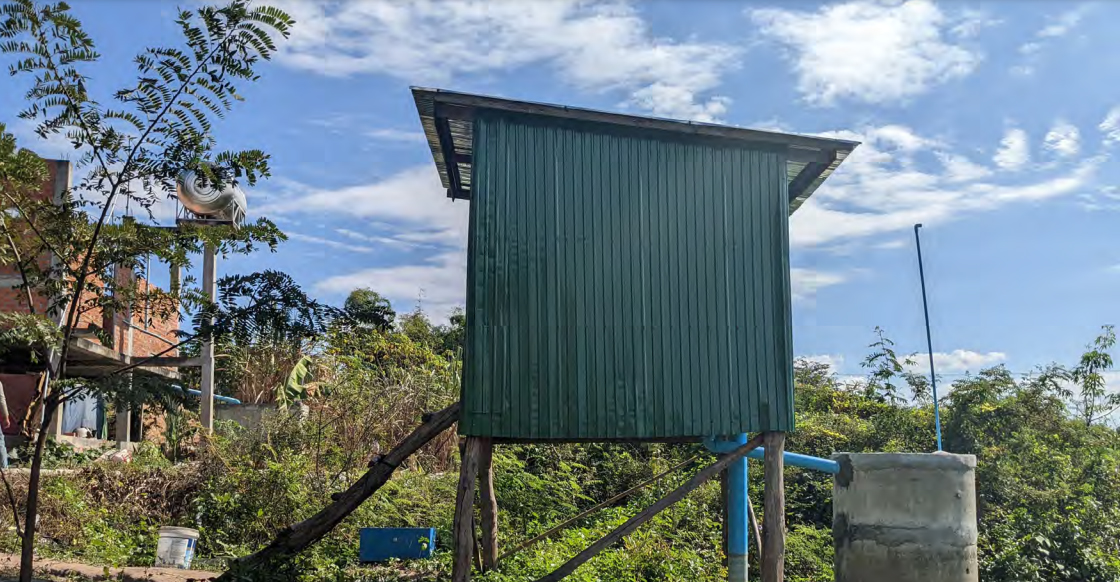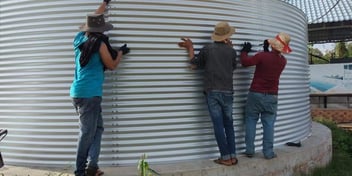Sanitation assessment framework set to support climate resilient WASH

With 3.5 billion people still living without access to safe toilets or sanitation systems, World Toilet Day (19 November) is raising awareness of the global sanitation crisis and encouraging everyone to consider what they can do to help tackle the issue.
Achieving access to sanitation for all is one of the global water sector's biggest hurdles and it’s set to become more difficult as the climate continues to change, but one recent research project has developed a framework to help boost the resilience of sanitation technologies.
Developed at the UTS Institute of Sustainable Futures, ClimateFIRST is a framework designed to help commercial, NGO, and research and development personnel, to assess and improve the resilience of sanitation systems and technologies.
UTS Institute of Sustainable Futures Research Director Dr Jeremy Kohlitz said sanitation technologies in many already vulnerable communities are under increasing risk of failure due to climate change.
“In the best of conditions, onsite and decentralised sanitation systems often don't function well in low-income countries. Whether it’s flood, drought, rising sea levels, or changing precipitation and temperature, climate extremes make it increasingly difficult for those systems to work well,” he said.
“There’s been an increased focus on standardising and formalising approaches to implementing and constructing sanitation systems. But climate change is driving more volatile and extreme climate variables.
“There's a need now for these designs and standards to accommodate a higher risk; the technologies will be exposed to more events that would previously have been considered to be very unlikely.”
The increasing volatility of extreme events could see some areas of sanitation development stall, or even go backwards, Kohlitz said.
“There's empirical evidence that people who once had access to an improved sanitation facility lost that access once their facility was exposed to an extreme event. This drives people down the sanitation ladder,” he said.
“When the sanitation system fails, communities revert to using unsafe sanitation facilities or going back to open defecation. So, climate change has the potential to slow, halt or even reverse the progress that we're making towards achieving the SDG6 target on sanitation.”
Sanitation is also closely linked to SDG6 targets for access to drinking water, Kohlitz said, as sewage pollution is a major driver of contamination in water supplies.
“If sanitation facilities are increasingly releasing fecal pathogens into the groundwater or surface water because of rising groundwater tables or surface runoff from more extreme weather events, that has implications for achieving safely managed drinking water, too,” he said.
Assessing resilience
The ClimateFIRST framework is broken down into five steps, Kohlitz said, and is designed to help decision makers bolster the climate resilience of sanitation systems.
“Step one involves choosing the sanitation technology that you want to assess, and considering which components of the technology will be included in the assessment. Step two is to select the hazardous events relevant to the context in which the technology is deployed,” he said.
“Hazardous events and trends are what we refer to as the floods, droughts, rising sea levels, fire, severe winds, and so on.
“Step three lists the relevant hazards that could disrupt sanitation technology. And the user reflects on each one of those hazards and considers if their sanitation technology was exposed to that hazard. Would it result in a low, moderate or high impact on their technology?”
Kohlitz said step four of the ClimateFIRST framework recommends up to 25 design features that could be incorporated into the design of sanitation technology to boost resilience.
“The user reflects on whether their current technology incorporates any of those design features. This encourages the user to address weak points, and how the technology design could be modified to better incorporate resilient design features,” he said.
“The final step is based on a reflection of the process of assessing the impacts of different hazards. It’s about considering the design features that are present or absent. The user makes overall judgments about the resilience of the technology to each hazardous event.
“Finally, the ClimateFIRST plan summarises the inputs. It gives the user a summary of the strengths of the system, potential improvements to be made and problematic hazards that need the most attention.”
ClimateFIRST in action
Primarily, ClimateFIRST is useful for research and development personnel, Kohlitz said, including people who are responsible for making sure sanitation technology design is able to accommodate climate hazards.
“If you're an implementer, or a planner, you might use it to assess the resilience of a sanitation technology that you're considering employing to understand if it's going to have problems or not,” he said.
“It can also be used to do an assessment and comparison of two different technologies to see the relative merits of the different options you're considering employing in an area.
“If you're a commercial entity, and you manufacture sanitation technology, you may want to highlight the value propositions of your product by highlighting its resilience. So by going through the resilience assessment, you can draw out the advantages.”
Kohlitz said regulators can also use the tool to develop design standards or codes to help steer the development of sanitation systems in a climate-resilient direction.
“As we go towards this shift of thinking about kind of standards and commercialization, we should be thinking about climate resilience along the way. ClimateFIRST provides a structured way of thinking about how resilience can be incorporated into something like a standard design,” he said.
“The topic of climate resilient sanitation can be a bit intimidating. Getting to basic sanitation, just a normal toilet, has been so hard. And now, on top of that, we're also asked to develop a climate-resilient sanitation system. It's increasingly difficult.
“But climate change offers opportunities. If we can demonstrate to governments and the broader industry that sanitation is important for climate resilience, we can potentially open up new streams of financing and resources that weren't previously available.”

